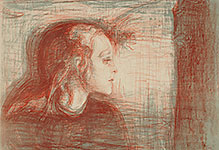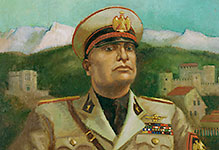
Portraits
Politicians and Statesmen, Painters' Portraits and Self-Portraits, Scientists, Rulers, Emperors and Kings, Musicians and Composers, Writers and Poets.

#30010361
Medallion of Alfonso V Aragon,King of Naples and Sicily (1394-1458).Inscripti...

#30010362
Medallion of Alfonso V Aragon,King of Naples and Sicily (1394-1458).Inscripti...

#30010412
Wax seal, Helwig von Ysenburg with falcon, 1274 Buedingen Castle, Buedin...

#30010413
Two wax seals: Ludwig von Ysenburg on horseback (left), his wife Helwig with fal...

#30010419
Bust of a young saint, probably a queen or princess, reliquary....

#30010530
Objects from Archduke's Ferdinand II "Wunderkammer": On the ceiling: 2 sharks...

#30010559
August der Starke, Elector of Saxony, King of Poland (1670-1733). Rear medall...

#30010620
Rolltop-desk, around 1790 Above the desk a portrai...

#30010626
Wooden cabinet inlaid with oval miniatures of the children of Queen...

#300108 1
Coin-set pendant of Emperor Constantine (reigned 306-337) Late Antique, 4th. Op...

#30010811
The Gumedruta ring, Lombardic or Ostrogothic, found at Bergamo,Italy; 6th-7th. E...

#30010821
0310000133 Dish with portrait of a woman, c1490-c1525. Maiolica dish painted wi...
